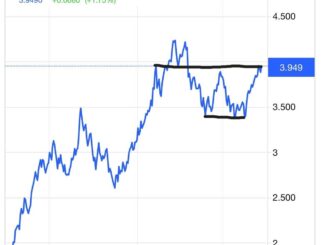
The Federal Reserve, Federal Depository Insurance Corporation (FDIC) and the Office of the Comptroller of the Currency (OCC) released on Thursday the proposed changes for the Basel III rule (called the Basel endgame), which significantly increases capital requirements for banks.
If implemented, the changes will affect the mortgage industry–and trade groups are already coming out in opposition to the new regulation.
As expected, the rules target financial institutions with $100 billion or more in total assets, which was undoubtedly influenced by the recent collapses of U.S. financial institutions with assets between $100 billion and $200 billion, including Silicon Valley Bank and Signature Bank.
Per the proposed changes, regulators expect that large holding companies’ binding common equity tier 1 capital requirement, including minimums and buffers, would increase by around 16%, compared to the 15% to 20% range mentioned earlier. Insured depository institutions would face an estimated 9% increase, including regional lenders. Community banks would not be impacted.
The proposal would include a three-year transition period beginning July 1, 2025.
“While the proposal would not generally change the minimum required capital ratios, the amount of required capital would change due to changes to the calculation of risk-weighted assets” says the memorandum released by the regulators.
“Staff of the agencies estimated that five large bank holding companies would have shortfalls in their common equity tier 1 capital requirement under this proposal based on year-end 2021 data,” FDIC Chairman Martin Gruenberg said in a statement. “For those large holding companies with shortfalls, the amount is estimated to be below one year of average earnings over the last seven years. This means these banking organizations would be able to achieve compliance with these revisions through earnings over a short timeframe, even while maintaining their dividends.”
The changes would boost capital requirements for large banks’ residential mortgage portfolios compared to international standards. Currently, first-lien whole loans prudently underwritten and performing to their original terms receive a 50% risk weight, while other loans receive a 100% risk weight.
Under the draft proposal, 40% to 90% risk weights would be assigned for large banks issuing residential mortgages, depending on the loan-to-value ratio, which is 20 basis points above the international standard. For example, a 50% risk weighting would be considered for a mortgage with LTV between 60% and 80%, and a 90% would be considered for an LTV above 100%.
Travis Hill, vice chairman at the FDIC who voted against the proposal., said risk sensitivity is a “double-edged sword.” When risk sensitivity is too little, it incentivizes risk-taking. But setting increasingly risk-sensitive standardized risk weights always involves choosing winners and losers.
“Nonetheless, there are some areas where additional risk sensitivity is justified. For example, in the proposal, incorporating loan-to-value ratios into the risk weight treatment for residential mortgages is understandable,” Hill said in a statement. “Market participants have been analyzing mortgage credit risk for many decades, spanning numerous business cycles, yielding a great deal of data and experience demonstrating the relationship between LTV and credit risk.”
Jonathan McKernan, a member of the FDIC board of directors, said the proposal offers no “loss history or other evidence to support the sizing of the surcharge.”
According to McKernan, the purported rationale is to avoid putting smaller banks, which would not be subject to the proposal, at a competitive disadvantage to large banks. But one alternative worth exploring is to extend the modernized Basel III to all banks. It has not been explored because the Basel III requirements are generally less than today’s requirements, McKernan said. “So, in reverse engineering a significant increase in capital, we have backed ourselves into this surcharge without evidence or real rationale.”
McKerarn said there likely will be real economic costs, such as increase in interest rates for low- and moderate-income and other historically underserved borrowers who cannot always afford a 20% down payment. It would also “perpetuate an existing capital arbitrage that drives mortgage lending out of the banking system
The Mortgage Bankers Association said the proposal would increase borrowing costs and reduce credit availability, ultimately hurting macroeconomic growth.
“Given ongoing affordable housing challenges, regulators should be taking steps that encourage banks to better support real estate finance markets,” Bob Broeksmit, president and CEO at MBA, said in a statement.”These proposed changes do precisely the opposite during a time of near record-low single-family delinquencies and pristine underwriting. This proposal also undermines several current policy objectives, from closing the racial homeownership gap to promoting competition over consolidation.”
Broeksmit is critical to issuing a proposal without “an advance notice of proposed rulemaking and a “quantitative impact study to assess the macroeconomic and sector impacts.”
“Experience with such significant capital changes tells us that equity markets will react immediately, and banks will respond to that pressure in real-time, long before the final rule is issued.”
“Increasing the risk weighting on mortgages by 20% across the board over Basel III is unnecessary, unwarranted, and dramatically impacts banks’ lending to low- and moderate-income individuals, particularly in a market where home prices and mortgage rates are at historic highs,” David Dworkin, National Housing Conference president and CEO, said in a statement. “Further, the proposal ignores the significant role of mortgage insurance in mitigating losses.”
Comments on the proposal will be accepted through November 30, 2023.



